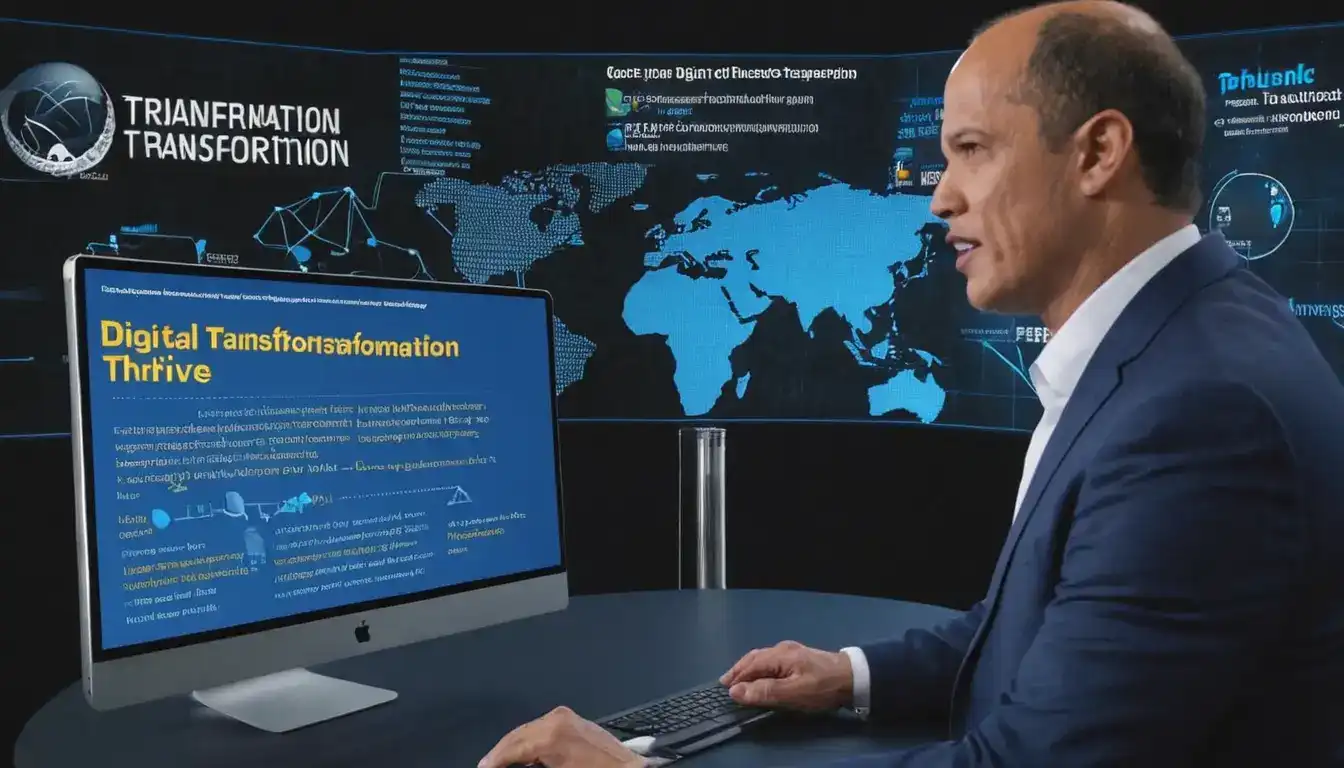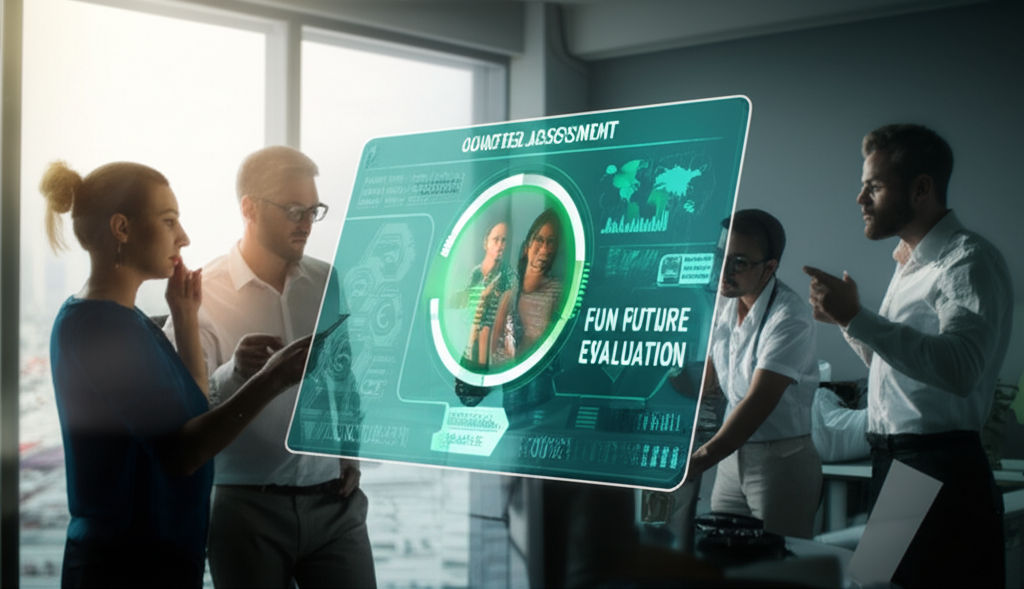Cybersecurity Ed: Protect Digital Future Students
Emily Willis

Photo: Cybersecurity Ed: Protect Digital Future Students
Cybersecurity Education: Protecting Our Students' Digital Future
In our increasingly interconnected world, students are digital natives, navigating a vast online landscape for learning, socializing, and entertainment. From online classrooms and research platforms to social media and gaming, technology is deeply woven into their daily lives. But with this incredible access comes a growing tide of digital dangers. Cybersecurity education is no longer a niche topic; it's a fundamental necessity to safeguard our students' digital future. It's about equipping them with the knowledge and skills to thrive online, making informed decisions, and recognizing potential threats before they become serious problems.
The Evolving Digital Landscape for Students
Think about a student's typical day. They might start by checking school assignments on a learning management system, collaborating on a group project via a shared document, then unwind with online games or catch up with friends on social media. Each of these interactions, while seemingly innocuous, presents a potential entry point for cyber threats. The sheer volume of time young people spend online, often unsupervised, makes them particularly vulnerable.
The rise of online learning, accelerated by recent global events, has further intensified this digital immersion. Schools are now repositories of vast amounts of sensitive student data, from academic records to personal information. This makes educational institutions, and by extension, their students, attractive targets for cybercriminals.
Real-World Risks: What Students Face
The threats students encounter online are diverse and constantly evolving. They range from frustrating inconveniences to truly devastating consequences.
- Phishing and Scams: This is one of the most common cybercrimes. Phishing involves fraudulent emails, texts (smishing), or websites designed to trick individuals into revealing sensitive information like login credentials or financial details. Students, often less wary, can easily fall victim to fake job offers, enticing links, or messages appearing to be from a friend or school. A small school district in Washington, for instance, lost a significant sum to a phishing scam in 2023, highlighting the real financial impact.
- Malware and Ransomware: Malicious software (malware) can infiltrate devices, leading to data corruption, system disruption, or even identity theft. Ransomware, a particularly nasty type of malware, locks users out of their systems or encrypts files, demanding payment for their release. Schools are increasingly targeted by such attacks, which can cripple operations and compromise sensitive data.
- Identity Theft and Data Breaches: Students' personal information, including names, addresses, birthdays, and even social security numbers, can be stolen and used for fraudulent activities. Data breaches at educational institutions are a serious concern, putting thousands of student and staff records at risk.
- Cyberbullying and Online Harassment: The digital world can be a breeding ground for bullying, which can happen 24/7 and have severe emotional and psychological impacts, sometimes leading to tragic outcomes.
- Inappropriate Content and Online Predators: Children and teenagers can be exposed to explicit or harmful content, and predators may attempt to exploit their innocence by posing as peers or building trust to manipulate them.
- Privacy Concerns: Students often share personal information online without fully understanding the implications. This can include oversharing on social media, using public Wi-Fi without precautions, or not understanding privacy settings.
The alarming truth is that despite their tech-savviness, students are often highly vulnerable because they may not fully grasp the risks involved.
Building a Strong Digital Foundation: Key Pillars of Cybersecurity Ed
Effective cybersecurity education isn't just about teaching a list of "do's and don'ts"; it's about fostering a deep understanding of digital responsibility and critical thinking.
Digital Citizenship and Online Etiquette
This foundational pillar focuses on responsible and ethical behavior in the digital realm. It's about understanding that the same rules of respect and kindness apply online as they do offline. Key areas include:
- Respectful Communication: Teaching students to communicate kindly and thoughtfully, avoiding cyberbullying and hate speech.
- Digital Footprint Awareness: Helping students understand that everything they post online leaves a permanent trace, influencing their future reputation.
- Source Evaluation: Developing critical thinking skills to discern credible information from misinformation and fake news.
Understanding Cyber Threats: Phishing, Malware, and Beyond
Knowledge is power. Students need to be able to identify common cyber threats.
- Phishing Recognition: Teach students to look for red flags in emails and messages:
- Requests for immediate action or personal information.
- Suspicious links or attachments from unknown senders.
- Spelling errors, strange URLs, or unusual tone.
- A good rule of thumb: "Think before you click!"
- Malware Awareness: Explain what malware, ransomware, and viruses are, and how they can infect devices (e.g., through suspicious downloads, infected USB drives).
- Social Engineering: Help them understand that cybercriminals often exploit human psychology, using tricks to gain trust or induce panic.
Strong Passwords and Multi-Factor Authentication
Passwords are the first line of defense. Students often use weak or reused passwords, making them easy targets.
- Password Best Practices:
- Length and Complexity: Encourage passwords of at least 12 characters, mixing uppercase and lowercase letters, numbers, and symbols.
- Uniqueness: Stress the importance of using different, unique passwords for each account to prevent a single breach from compromising multiple accounts.
- Avoid Personal Information: Remind them not to use easily guessable information like birthdays, pet names, or "password123".
- Password Managers: Introduce the concept and benefits of using a trusted password manager to securely store and generate complex passwords.
- Multi-Factor Authentication (MFA): Explain how MFA adds an extra layer of security by requiring a second form of verification (like a code from a phone) in addition to a password. Encourage its use whenever available.
Privacy Matters: Protecting Personal Information
Students need to be mindful of what information they share online and with whom.
- Privacy Settings: Teach them how to adjust privacy settings on social media platforms and apps to control who sees their posts and personal data.
- Public Wi-Fi Risks: Explain the dangers of using public Wi-Fi for sensitive activities (like online banking) and recommend using a Virtual Private Network (VPN) for encryption.
- Oversharing: Emphasize the importance of not giving out personal identifying information (name, address, phone number, school) to strangers online or sending inappropriate images/videos.
Safe Social Media and Online Interactions
Social media is integral to student life, so teaching responsible use is crucial.
- Think Before You Post: Reinforce that once something is online, it's often permanent and can have long-term consequences.
- Interacting with Strangers: Advise caution when accepting friend requests from unknown individuals and never agreeing to meet someone met online without parental approval.
- Reporting Suspicious Activity: Empower students to report any suspicious or uncomfortable interactions to a trusted adult (parent, teacher, school authority).
Who Needs to Be Involved? A Collaborative Approach
Protecting students in the digital age requires a unified front. It's a shared responsibility that extends beyond the classroom.
The Role of Schools and Educators
Schools are on the front lines of cybersecurity education. They have a crucial role in preparing students for a secure digital future.
- Curriculum Integration: Cybersecurity education should be woven into existing curricula, not just taught as a standalone subject. This can include computer science, digital literacy, and even general education courses.
- Teacher Training: Educators themselves need comprehensive training to effectively teach cybersecurity concepts and stay updated on evolving threats.
- Robust IT Infrastructure: Schools must invest in strong technical defenses, including firewalls, antivirus software, and threat detection systems, to protect institutional data and networks.
- Creating a Culture of Security: Beyond technical measures, schools should foster an environment where cybersecurity is a shared value and everyone understands their role in maintaining security.
Parents as First Line of Defense
Cybersecurity awareness often begins at home. Parents play a vital role in guiding their children's online habits.
- Open Communication: Establishing an open, judgment-free dialogue with children about their online experiences is paramount.
- Setting Boundaries and Rules: Define clear rules for internet
Latest ✨
View AllUnlock your next great business idea! Learn a structured process to discover, evaluate, and refine entrepreneurial opportunities for real-world success.
Emily Willis
Unlock your financial superpower! Learn why financial literacy is crucial for a secure future & how to easily master money management for true independence.
Emily Willis
Craft a winning pitch deck! Learn to transform your vision into a compelling presentation that captivates investors & unlocks opportunities.
Emily Willis
Discover the blended teacher: how educators are transforming learning by combining traditional & online methods for personalized, engaging education.
Emily Willis
Business
View All
August 4, 2024
Digital Transformation: Businesses Leverage Technology to Thrive in the Digital AgeThe business world is evolving rapidly, with consumers expecting seamless digital experiences. Digital transformation involves integrating technology, focusing on customers, making data-driven decisions, and fostering innovation.
Emily Willis

August 5, 2024
Tips for Maintaining a Balance Between Work and Personal LifeAchieving a healthy work-life balance is essential for overall well-being, productivity, and happiness. Setting clear boundaries, prioritizing self-care, managing time effectively, nurturing relationships, and learning to unplug are key strategies to maintain this balance. It is important to communicate your needs effectively, seek support, and delegate tasks when necessary.
Emily Willis

June 9, 2025
Business Resilience in Uncertain TimesUnlock business resilience! Prepare for, adapt to, and overcome challenges. Transform uncertainty into opportunity and build a stronger, future-proof business.
Emily Willis
Economy
View AllUnlock global growth potential! Discover dynamic emerging markets, their rapid economic expansion, vast opportunities, and how to navigate complexities.
Read MoreGlobalization has reshaped the economic landscape, connecting countries and markets like never before. For emerging economies, this presents both challenges and opportunities. Challenges include economic vulnerability, income inequality, job displacement, and environmental impact.
Read MoreCentral banks are facing unique challenges in the current economic landscape, including rising inflation, geopolitical tensions, and lingering effects of the pandemic. They have a set of tools at their disposal, such as monetary policy, open market operations, and reserve requirements, to influence the economy.
Read MoreEntertainment
View All
August 4, 2024
The Evolution of Digital Distribution in the Music Industry: Challenges and OpportunitiesThe music industry has been transformed by digital distribution, which allows quick access to a vast catalog of music through streaming services and online stores.
Emily Willis

August 5, 2024
Classic Films: Timeless Masterpieces in the Age of StreamingClassic films may seem outdated in today's world of instant gratification and endless streaming options, but they offer enduring stories, masterful storytelling, historical insights, technical innovation, and artistic value that surpass modern offerings. While classic films face challenges such as accessibility and pacing, there are ways to overcome these obstacles, such as using streaming services, visiting local libraries, attending film festivals, and utilizing online resources.
Emily Willis

August 4, 2024
The Latest Music Trends, Artists Influencing Pop Culture, and How Digital Platforms Facilitate the Distribution of Music GloballyThe music industry is constantly changing due to consumer preferences, technology, and the influence of artists. Digital platforms have revolutionized music creation, distribution, and consumption, leading to genre fusion, the rise of independent artists, and collaborative projects. Influential artists like Billie Eilish, BTS, and Taylor Swift have shaped pop culture globally. Streaming services, social media, and direct-to-fan engagement have transformed music distribution. Digital platforms also promote cultural diversity and inclusivity, expand markets and revenue, and drive technological advancements. The industry is also focusing on sustainability and ethical practices. To succeed in the future, stakeholders must embrace digital transformation and champion inclusivity.
Emily Willis
Health
View AllRegular physical activity is crucial for maintaining long-term health and well-being. It has numerous benefits, including improving cardiovascular health, aiding in weight management, enhancing mental health, strengthening bones, boosting immune function, and promoting longevity.
Emily Willis
Quality sleep is essential for overall health and well-being, impacting physical, cognitive and emotional functioning. Lack of quality sleep can lead to a variety of health issues, including weakened immune function, heart problems, weight gain and cognitive impairment.
Emily Willis
Preventive healthcare focuses on strategies to prevent disease and maintain well-being, rather than just treating illnesses after they arise. It helps identify risk factors early on, allowing for interventions that can prevent or delay the onset of chronic diseases.
Emily Willis
Trending 🔥
View All
1
2
3
4
5
7
8
9
10
Lifestyle


Sports
View AllAugust 5, 2024
Sports for Social Good: Promoting Diversity, Inclusion, and Community Engagement
Read MoreAugust 5, 2024
The Future of Sports: Anticipating Trends, Embracing Innovation, Shaping a New Era
Read MoreTechnology
View All
August 4, 2024
The Future of Artificial Intelligence: Opportunities and Challenges
opportunities and challenges presented by Artificial Intelligence (AI) in various sectors such as efficiency, customer experiences, healthcare, education, and economic growth. It highlights the need to address ethical considerations, job displacement, privacy issues, security risks, and regulatory challenges associated with AI.

August 5, 2024
Benefits of Using Cloud Computing for Your Business
Cloud computing has revolutionized business operations by offering cost savings, scalability, improved collaboration, enhanced security, and robust disaster recovery. It allows businesses to access services over the internet, reducing the need for physical infrastructure and providing flexibility.

August 5, 2024
AI Trend Predictions for 2024 and beyond
AI is no longer a futuristic concept, it is shaping our world at an unprecedented pace. In 2024 and beyond, AI trends are likely to dominate in various industries. Generative AI is expected to revolutionize content creation, design, and product development. In healthcare, AI will lead to personalized medicine, drug discovery acceleration, improved diagnostics, and remote patient monitoring.

August 5, 2024
The Impact of AI on the Future of Work and Education
AI is rapidly advancing and reshaping industries, economies, and societies, especially in the areas of employment and education. In the workplace, AI is changing roles through automation and creating new job opportunities. The future of work will most likely involve collaboration between humans and AI, requiring workers to develop new skills and engage in lifelong learning.



















